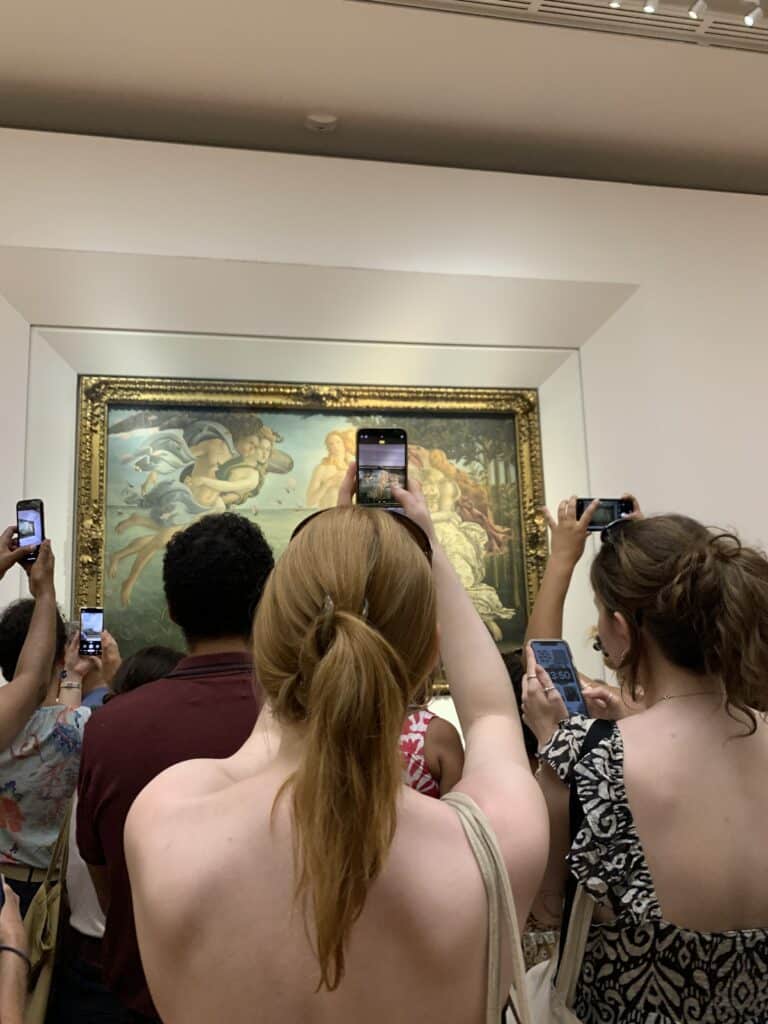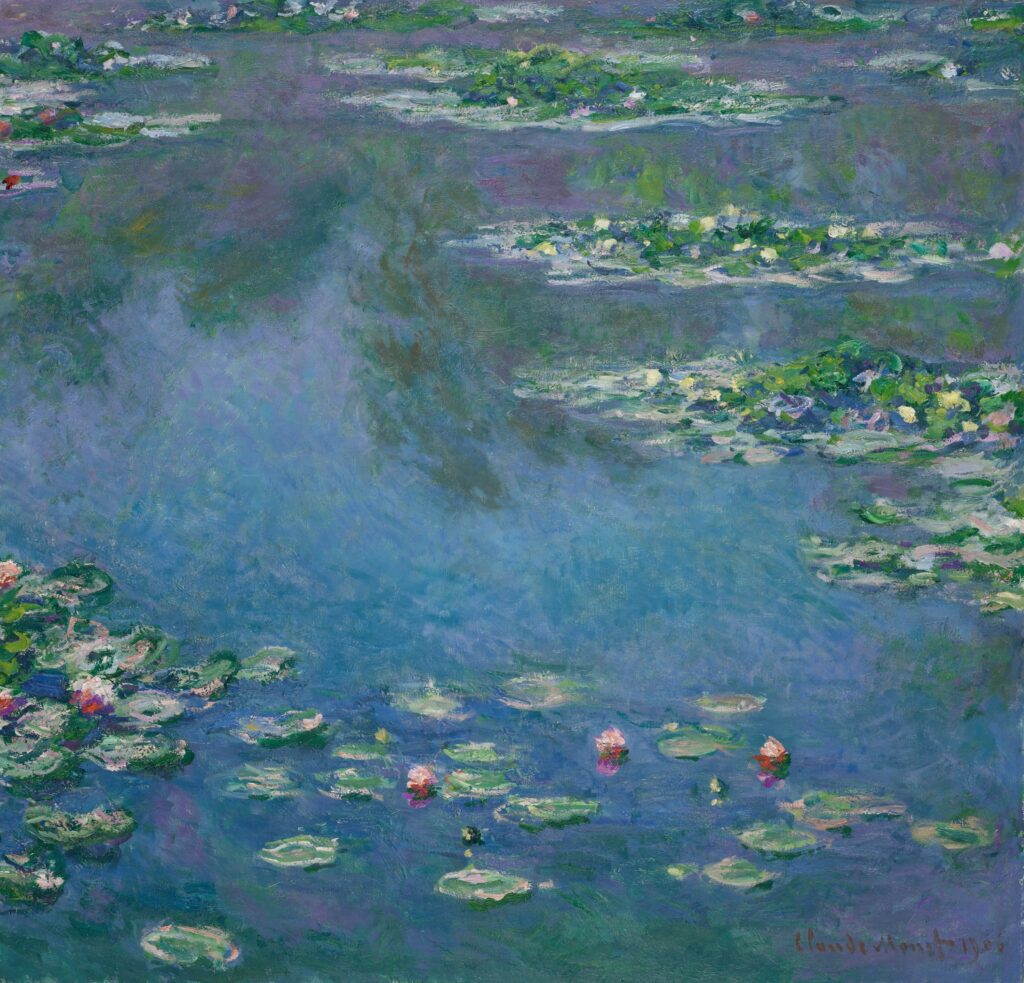In this article, I am gonna share with you the 12 world’s most famous paintings and where they are located.
I have just finished planning a trip to Vienna, Austria where I will be going to see “The Kiss” by Gustav Klimt. And that made me think that many travelers or artists do may not know where some of the world’s most famous paintings are being exhibited, so let me help you locate your favorite artworks and why not get an entry ticket (in case you plan a trip anytime soon) to go see it.
The 12 most famous paintings and where they are located
- The Mona Lisa by Leonardo da Vinci – The Louvre Museum in Paris, France.
- The Starry Night by Vincent van Gogh – The MoMa (The Museum of Modern Art) New York, USA.
- The Last Supper by Leonardo da Vinci – Santa Maria delle Grazie church in Milan, Italy.
- The Creation of Adam by Michelangelo Buonarroti – Sistine Chapel in the Vatican City – Rome, Italy.
- The Scream by Edvard Munch – The National Museum in Oslo, Norway.
- Girl with a Pearl Earring by Johannes Vermeer – The Mauritshuis museum in the Hague, Netherlands.
- The Birth of Venus by Sandro Botticelli – The Uffizi Gallery in Florence, Italy.
- Water Lilies by Claude Monet – The Metropolitan Museum of Art in New York, USA.
- The Kiss by Gustav Klimt – Upper Belvedere Palace in Vienna, Austria.
- The Persistence of Memory by Salvador Dalí – The MoMa (The Museum of Modern Art) New York, USA.
- The Night Watch by Rembrandt – Rijksmuseum in Amsterdam, Netherlands.
- Guernica by Pablo Picasso – Museo Reina Sofía in Madrid, Spain.
Where are the 12 most famous paintings located?
The Mona Lisa by Leonardo da Vinci
The Mona Lisa is the world’s most famous painting and it is exhibited in the Louvre Museum‘s permanent collection. The Louvre is located in Paris and is one of the hardest museums to visit. But, you can get a skip-the-line ticket through this link.
The museum claimed to never put the original painting for exhibition because of the amount of damage that she witnessed in the past and to avoid any potential destruction from activists or the public attending the museum.
The Starry Night by Vincent van Gogh
Weirdly enough, the starry night is not located in the Van Gogh museum, it is in fact located in the MoMa (The Museum of Modern Art) New York. You may wonder, how did The Starry Night get to New York out of all places? Well, Vincent sold only a handful of artworks during his lifetime. When Vincent passed away, his brother Theo inherited all the remaining ones. Yet when Theo died shortly after, they all fell into the hands of Theo’s wife Jo and their only son. In order to establish Vincent’s recognition in the art world, Jo strategically sold artworks to influential art collectors or well-known museums. One day, Jo sold The Starry Night to Georgette van Stolk in Rotterdam. Then in 1941, MoMA acquired it from her. It was the first Van Gogh to enter a New York museum collection. (Source of this info is Van Gogh Museum)
The Last Supper by Leonardo da Vinci
The work was commissioned as part of a plan of renovations to the church and its convent buildings by Leonardo’s patron Ludovico Sforza, Duke of Milan. In order to permit his inconsistent painting schedule and frequent revisions, it is painted with materials that allowed for regular alterations: tempera on gesso, pitch, and mastic. Due to the methods used, a variety of environmental factors, and intentional damage, little of the original painting remains today despite numerous restoration attempts, the last being completed in 1999. The Last Supper is Leonardo’s largest work, aside from the Sala delle Asse.
The Creation of Adam by Michelangelo Buonarroti
Michelangelo’s Creation of Adam is one of the most replicated religious paintings of all time. The fresco is part of a complex iconographic scheme and is chronologically the fourth in the series of panels depicting episodes from Genesis.
Michelangelo was originally commissioned to paint the Twelve Apostles on the triangular pendentives that supported the ceiling, and cover the central part of the ceiling with ornament. Michelangelo persuaded Pope Julius to give him a free hand and proposed a different and more complex scheme, representing the Creation, the Fall of Man, the Promise of Salvation through the prophets, and the genealogy of Christ.The work is part of a larger scheme of decoration within the chapel which represents much of the doctrine of the Catholic Church.
The Scream by Edvard Munch
Munch recalled that he had been out for a walk at sunset when suddenly the setting sun’s light turned the clouds “a blood red”. He sensed an “infinite scream passing through nature”. Scholars have located the spot to a fjord overlooking Oslo and have suggested other explanations for the unnaturally orange sky, ranging from the effects of a volcanic eruption to a psychological reaction by Munch to his sister’s commitment at a nearby lunatic asylum.
Munch created two versions in paint and two in pastels, as well as a lithograph stone from which several prints survive. Both painted versions have been stolen, but since recovered. In 2012, one of the pastel versions commanded the highest nominal price paid for an artwork at a public auction at that time.
Girl with a Pearl Earring by Johannes Vermeer
On the advice of Victor de Stuers, who for years tried to prevent Vermeer’s rare works from being sold to parties abroad, Arnoldus Andries des Tombe purchased the work at an auction in The Hague in 1881, for only two guilders plus thirty cents buyer’s premium (around €24 at current purchasing power). At the time, it was in poor condition, with parts of the paint layer having become detached. Des Tombe had no heirs and by a bequest donated this and other paintings to the Mauritshuis in 1902.
The painting has since been widely exhibited about the world until in 2014 the Mauritshuis took the decision that it should not leave the museum in the future. By that time, as a result of its promotion, a CNN survey named it one of the world’s most recognizable paintings.
The Birth of Venus by Sandro Botticelli

It has long been suggested that Botticelli was commissioned to paint the work by the Medici family of Florence, perhaps by Lorenzo di Pierfrancesco de’ Medici (1463–1503) a major patron of Botticelli, under the influence of his cousin Lorenzo de’ Medici, “il Magnifico”. This was first suggested by Herbert Horne in his monograph of 1908, the first major modern work on Botticelli, and long followed by most writers, but more recently has been widely doubted, though it is still accepted by some.
Water Lilies by Claude Monet



